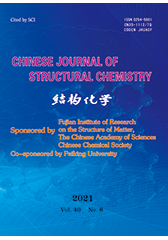CoMFA Model and Molecular Design of Anti-excitatory Activity for Benzodiazepinooxazole Derivatives against Mice
ZHU Li-Lan, QIN Zheng-Long and FENG Chang-Jun*
Chin. J. Struct. Chem. 2021, 40, 1075-1081 DOI: 10.14102/j.cnki.0254-5861.2011-3164
August 15, 2021
benzodiazepinooxazole derivative, mice, anti-excitatory activity, 3D-QSAR, comparative molecular field analysis
ABSTRACT
A 3D-QSAR study was conducted to analyze
the anti-excitatory activity (pE) of benzodiaze-
pinooxazole derivatives to mice by the comparative molecular field
analysis (CoMFA) method. Among the 54 active molecules, a training set of 46
compounds was randomly selected to construct the CoMFA model; the remaining
compounds, together with template molecule (No. 54) and two newly designed
molecules constitute a test set of 17 compounds to validate the model. The
obtained cross-validation coefficient (Rcv2), the non-cross validation
coefficient (R2), and the
test value F of the CoMFA model for training
set are 0.516, 0.899, and 57.57, respectively. The model was used to predict
the activities of all compounds in the training and testing sets, and the
results indicated that the model had good correlation,
strong stability and good predictability. Based on the 3D contour maps, eight novel benzodiazepinooxazole
derivatives with higher anti-excitatory
activity were designed. However, the effectiveness of these novel benzodiazepinooxazole
derivatives is still needed to be verified by the experimental results.








